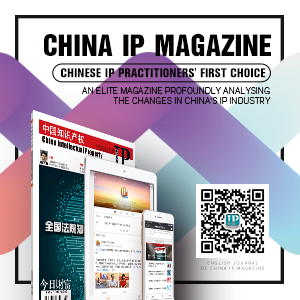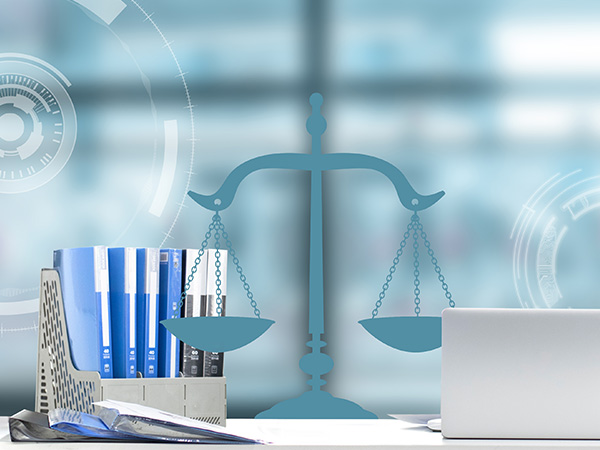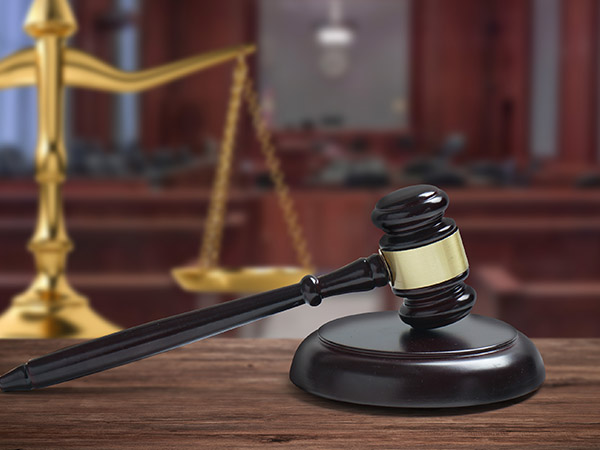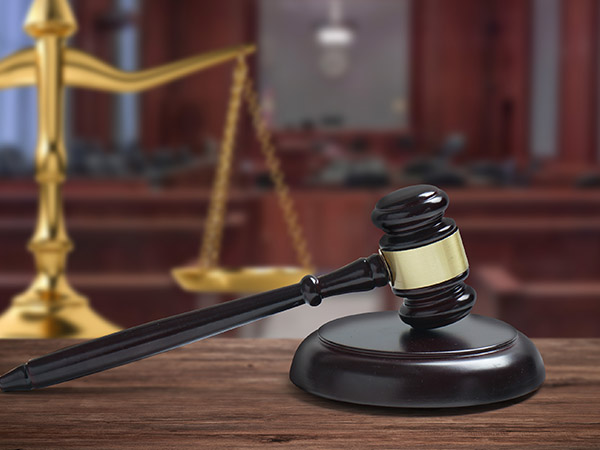Legal Disputes Arising from Webpage Plagiarism
By Cao Liping, Judge at Intellectual Property Tribunal of Beijing Municipality Haidian District People's Court
By use of a review and analysis of common disputes concerning webpage plagiarism in practice, this paper is designed to define the following questions: what kind of webpage can be protected by the law Should the Copyright Law or the Law of the People's Republic of China Against Unfair Competition (Anti-Unfair Competition Law) be applied to such protection What kind of webpage can not be protected by the law?
Although the term "plagiarism"can not be found in the articles of China's current law and regulations,it has been a term often mentioned in dispute cases involving infringement of copyright. In judicial practice, the term "plagiarism" is often deemed as the act of using others' work without authorization.
In recent years, the terms "plagiarism" mentioned in the IP infringement cases involving the Internet have not be confined to the "plagiarism" under the Copyright Law. Particularly in cases involving the constant emergence of webpage "plagiarism" (the webpage in this paper includes webpage and other pages for all kinds of client application software), different plaintiffs usually submit claims such as infringement upon copyright, counterfeit of unique packaging and decoration of well-known goods, false advertisement,malicious free-riding. The courts have made different judgments for such claims. This paper is designed to, by way of a review and analysis of common disputes concerning webpage plagiarism in practice, to define the following questions: What kind of webpage can be protected by the law?Should the Copyright Law or the Law ofthe People's Republic of China Against Unfair Competition be applied to such protection? What kind of webpage cannot be protected by the law?
The Situation in which the Copyright Law should be applied
Although webpages are usually composed of graphics, texts, colors, lines, audios, videos, flash-based contents and the combination of the aforesaid elements, webpage's obligee claiming that the Copyright Law should be applied usually claims that the overall webpage constitutes an art work(the party in a dispute usually makes no proper claim for the audio and video contents related to flash-based contents and audio or video animation which are contained in the plagiarized web pages because such contents maybe claimed independently in cases involving plagiarism). In determination of whether the webpage claimed by the plaintiff as a whole can be regarded as a work of fine art, it is necessary to examine whether the webpage satisfies the legal elements for fine art work stipulated in the Copyright Law, which means that all elements in the webpages hould form an aesthetic work after a combination of such elements.
The webpage can be regarded as a work of fine art if: (a) the form for presentation of every element in the web page should not only meet the adapting requirements for software and hardware such as the system and the display terminal, but also meet the functional requirements such as the adaptation to user's browsing and visiting habits and link with other pages and (b) if the author's aesthetic understanding can be found from the webpage as a whole. In fact, there are very few such pages in practice and there have been few judgments in this regard as a result.
Some parties raise a question: while some works, such as simple strokes,can be regarded as fine art works even if they are drawn by elements such as very simple lines and even some certain work can be sold at a very dear price just because of its creator as are renowned painter. Why can't a piece of webpage consisting of the same simple elements be regarded as fine art work? In this regard, it needs to be clear that the protection for fine art works under the Copyright Law is to protect the creators' expression of beauty. There are many simple forms of beauty in our lives and the legal protection shall be granted to the work if it has original creation of the author.However, a webpage composed of simple elements for expression can not be the object under legal protection as the work of fine art because, on the one hand, such webpage is composed of very simple elements which can be represented by the web pages, such as home page used by search engine or pages with business introduction or function/menu selection used by some companies which are mainly used to exhibit their usefulness and functionality instead of beauty, and on the other hand, such web pages are rarely created by the author.
Another interesting proposition claimed by the plaintiff is that,although a single webpage does not constitute a fine art work, the combination of multi-level web pages can become a compilation of works on the grounds that Article 14 of China's Copyright Law stipulates that"a collection of preexisting works or passages therefrom, or of data or other material which does not constitute a work, if manifesting the originality of a work by reason of the selection or arrangement of its contents, is a compilation." Such compilation can reflect the complier's original labor by his selection or arrangement of multi-level web pages. The author thinks that such a claim can not be affirmed in general. It is necessary to emphasize that the reason why the compilation works can be protected by China's Copyright Law" is the compiler's creative labor on the complied objects; and that the compilation of multi-level web pages can not be regarded as a work of compilation because of some arrangement orders contained therein. There should be no reflection of original compilation if such compilation is arranged in the common or necessary logic order.
The Situation in which Anti-Unfair Competition Law can be applied
Does it mean that the legal rights and interests of the developer or operator can not be protected if their works cannot be deemed as works? The answer is no. In practice, Law of the People's Republic of China Against Unfair Competition can be applied in the three situations against the plagiarism of others' web pages: (a) Article 2 shall be applied if the defendant violates the principle of good faith and generally accepted business ethics; (b) the defendant's plagiarism of web pages with relative distinctiveness is a kind of counterfeit of well-known goods' unique packing or decoration and (c)there are some false advertisement son the defendant's web pages by way of plagiarizing some contents such as awarded honors and successful cases in which the key is whether the advertising contents on the defendant's web pages are true instead of whether there is plagiarism of contents on the plaintiff's web pages.In practice, the third type of dispute is relatively simple in terms of facts ascertainment and law application, which will not be discussed in detail in the following texts.
In the first situation, there is a serious plagiarism conducted by the plaintiff, which is similar to the "low-level plagiarism" in copyright disputes, in which a large amount of web pages are plagiarized, such plagiarism is basically a copy of the original pages and the parties' webpages contents are basically the same on the whole. For example, in the case of the plagiarized application software "Chinese Lunar Calendar", more than 100 images were plagiarized by the defendants from the software with the same name previously developed by the plaintiff, accounting for more than 50% of the total number of images contained in the two kinds of software. Although these images, individually or in combination, can not be regarded as the works under the Copyright Law,they were the plaintiff's operational achievements, and his legal rights and interests would be harmed if they were substituted by others' plagiarism and use in the same kind of software. It should be noted that there has been an increasing number of disputes concerning unfair competition arising from such kind of low-level plagiarism, which can be found in the interfaces of application software, websites with the same kind of services, games of the same kind,etc. The reasons behind such kind of plagiarism are that the operator, who is anxious to achieve quick success and get instant benefits with try-your-luck mentality in the process of quick release of internet-based products,wants to attract more flows after uploading of products or services.
In the second situation, the main or typical elements such as graphics and texts contained in the plaintiff's web pages are plagiarized by the defendant from time to time, while some elements and their combination are added or adjusted and new structural arrangements are made at the same time so that, although the defendant's web pages are similar to that of the plaintiff, there are some differences between them. If the plaintiff's application software or services have a certain reputation after advertisement and promotion in the market, the plaintiff will often claim that the defendants has counterfeited the unique packaging or decoration of his well-known goods.
Can the act of plagiarizing some elements contained in others' webpages be regarded as a counterfeit of the unique packaging or decoration of well-known goods? It is generally understood that the legal regulation of counterfeit actually refers to the deeming of the unique label or other identifiable appearance of well-known products as unregistered trademark, and the counterfeit will be prohibited only if the name, packaging or decoration of relevant goods is sufficient to identify the trademark of relevant goods.
At the same time, it is also necessary to clarify the meaning of the counterfeit of "packing" and"decoration" which are prohibited by Anti-Unfair Competition Law. In the sense of material carrier, "packaging"means containers, materials and the like which are specially designed for the goods in order to protect the goods in the process of circulation so that it can be easily stored and sold. Of course, the counterfeited"packaging" which can be prohibited according to Anti-Unfair Competition Law can not be simply understood as the material carrier of a certain goods,but rather as the shape, pattern, line,color and their combination that can identify the source of the goods.Similarly, "decoration" is the words,patterns, colors and their combination attached to the goods or its package in order to identify and beautify the goods. Therefore, "packaging" and"decoration" are different from words, patterns and their combination with the goods itself because of their identification and beautification.
Can some elements such as words or patterns contained in the webpages be regarded as the "packaging" or"decoration of the goods or service provided by the operator? The author thinks that the answer is negative in most situations according to the general understanding of life and logics. The web page itself is the components of the goods,service or contents provide by the operator, which can not be used for the identification and beautification of goods or services without the goods or service. Therefore, if the plaintiff claims that some elements contained in his web pages or some contents in his application software are plagiarized, the articles provided for in the Anti-Unfair Competition Law can be not be easily applied because it is difficult to interpret the webpage elements or webpage contents as the"packaging" and "decoration" of the websites or application software even if they are plagiarized by others.
Of course, application of no articles concerning counterfeit does not mean that such kind of plagiarism can not be regulated by the law. If the plagiarized contents can be identified as works, the Copyright Law can be applied; otherwise, it should not be considered as "packaging" and"decoration". However, the distinctive names of columns or sections after they're promoted and widely used,may constitute the unique name of well-known service. Although the plagiarized contents can not be identified as the unique name of well-known services, the principle clause of Anti-Unfair Competition Law maybe applied if there is a large amount of plagiarized elements which shows that the defendant has an obvious malice of free-riding in his plagiarism.
III. The Situation in which exclusive protection should not be granted to web pages designed for only function requirement
The innovation speed of Internet-based business usually determines its market share. Some application software can attract more users and gain good reputations in a short period just because they have one or more innovative functions in comparison with their counterparts. Network operators will bear a huge risk of failure in their innovation of new products or functions because of huge investment in human and material resources. Many network operators extremely value the innovative functions contained in their products and hope the law can protect such innovations. Some innovative functions are achieved through web design. Therefore,Can the operator, who previously designed and brought the product to the market, prevent others from using webpage design identical with or similar to his web pages for realization of the same function?
In general, the webpage interface inform of words and patterns may have the designs with practical function such as hierarchical menu, tool buttons and materials for user's selection operation, and the unique designs for partial beautification and operator identity indication. The operator can prevent others from maliciously imitating his relevant interfaces only if relevant unique interface designs or their combination have formed a relatively stable directional representation that can distinguish its goods or service from that of others.Therefore, other's use of the web design subject to exclusive protection can be prohibited only if it falls within the situations mentioned in the said situation I and situation II. The operator will have no way to prohibit others from using the webpage design if the design with such function is only a reflection of functional and practical features such as the progress bar showing music play progress, the play button in form of triangle, the pause button in form of two short bars and the search button in form of magnifying glass pattern.
(Translated by Yuan Renhui)










